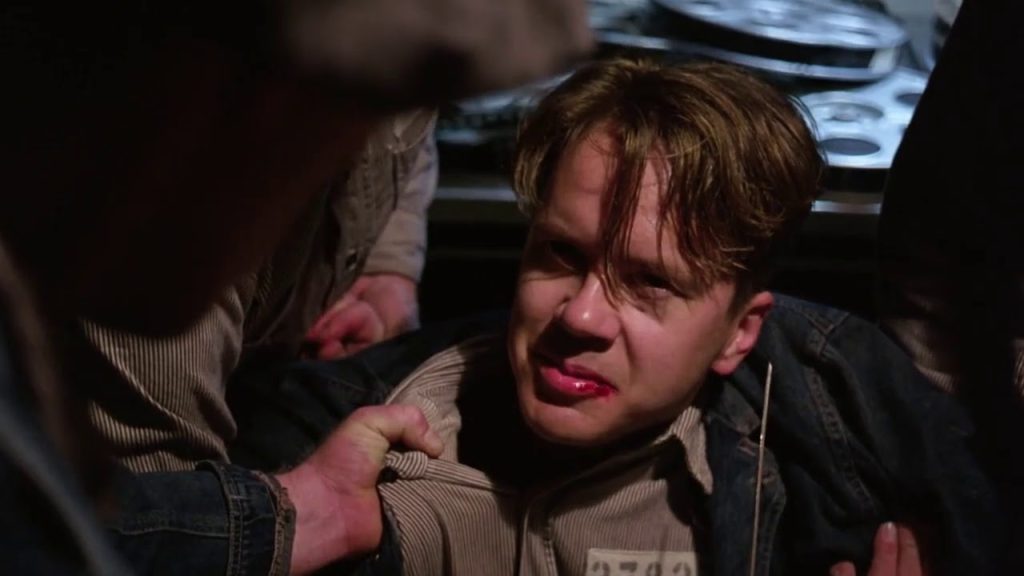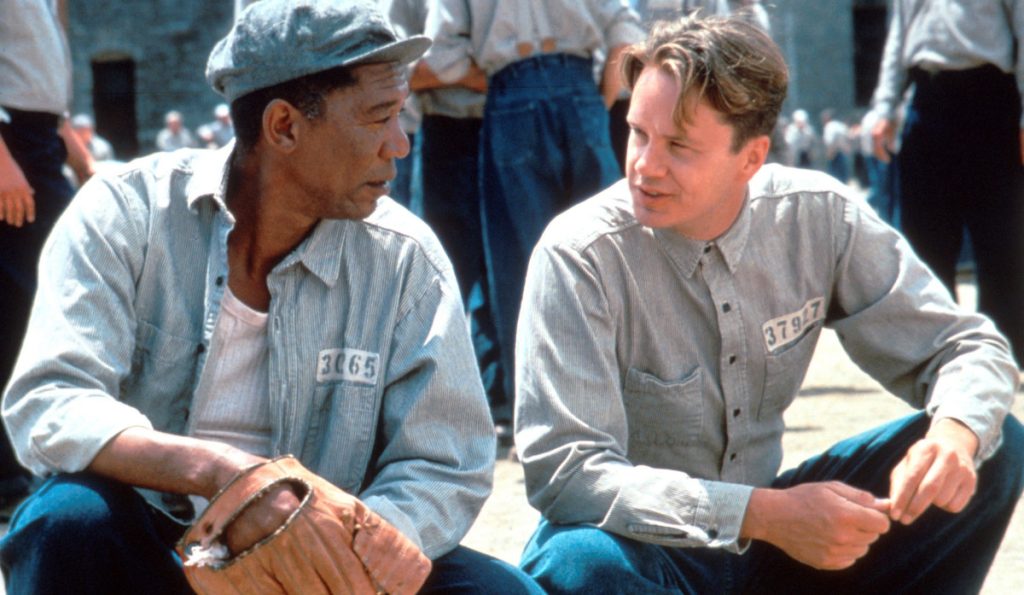For a movie that featured busting a load in another man’s mouth as repeated punishment for (and get a load of this) resisting the idea of taking the load to begin with, The Shawshank Redemption struck me as surprisingly tame during its first hour. Though never shown, this was twice insinuated to the victimized protagonist by the ring leader of the prison’s resident sodomites known unironically as The Sisters. That the film elicited a bipolar reaction was likely thanks to a lengthy 2h22m runtime and establishing passages equally sizable in proportion perhaps giving rise to a regression to the mean over the long haul.
And with the depiction of vicious guards, a conniving warden and a band of rapists, the film, and perhaps King all along, checked off a familiar trifecta of prison cliches. And though redeeming discourses on institutionalization abound, was there a need for any of its flaws to dampen the horrors and appeal to rose-tinted revisionism?

Let us pause at one of its more implausible depictions. It is 1947 and Red (Morgan Freeman) is immune from racial disparagement not because of the authority afforded to a trusted contraband supplier. It was rather the disneyfied portrayal of a penal utopia where racial harmony not only reigned but ran counter to what birthed the Civil Rights movement a decade later. He’s a magical negro, learned in the skillful navigation of pitfalls like beatings and solitary confinement, among other ingenuities.
These hazards either predate the film’s narrative or simply don’t warrant the screen-time. Nor a line of script in a picture that, of all things, helped immortalize the Freeman voice-over for posterity. We’ll never know by only watching the film. Perhaps years of evading detection at his craft come with the benefit of reliably dodging flailing fists though I suspect a heavy dose of white guilt drew the line in the sand at the utterance of racial epithets. Was that you, Stephen Kang?
There is, however, a dignified air for a major supporting actor to transcend social climate, and earn his seat at the table even if at the lower social stratum of chow halls and prison yards. But with an anthology of safe cliches and a protagonist disinclined to retaliate at any juncture, the film is now twice guilty of that Disney brand of wholesomeness. Thrice to be precise; because the only thing more laughable than a hooker with a heart of gold is the unprecedented incarcerated variant.

Because I’d rather fall for and endure the sob story of a professional escort than the conspiracies of a life-long jail bird. Because if one were to contract an STI, I’d much rather it arrived by way of an extension of myself rather than one unto myself. I’d imagine peers and counterparts preferred the same, gun to the head and all, despite manipulation by the former possibly landing one in the bunk alongside the latter. At least we were spared the magnanimous posturing in lieu of any vindictive impulse on Dufresne’s part. Still, it’s an underdog’s trial by ordeal, at heart, and there’s plenty to play and account for, and avenge.
The only deaths shown can be safely chalked up to the system instead of an irate inmate blowing a gasket. One can safely presume the traumas from which funneled into Dufresne’s psyche further fueling his internalization. Here, Shawshank dangles institutionalization as an insidious byproduct of incarceration, rarely—if ever—evoking the monotony that engenders it. For instance, part of me welcomed the torment of Dufresne having to relive the indiscretions of that cheating dead bitch juxtaposed against the events.

The abuse brought on by the booty bandits, or at least the intrusion of said visions in between Rita, Marilyn and Raquel, come to mind as apt moments to punctuate. Going off on that subplot with the released inmate served little other than to heighten the moment of Red entering the same room. Instead, monotony and institutionalization were rendered in chronological progression; the pin-up girls going in and out of vogue, Tommy’s arrival as rock and roll became just rock music, etc.
It peddles in false optimism if it’s ever considered a guide on surviving a lengthy incarceration. Even then, one would also accuse it of classicism wherein the impoverished and downtrodden, even if hardened by a deserved rap sheet, are no match for the banker’s calculated resolve. This leaves Red’s transformation, the redemption in question, under the microscope. How was it that only he was given the opportunity to abscond and be shown the light? Better yet, is redemption an inalienable right now or a privilege reserved for a few?